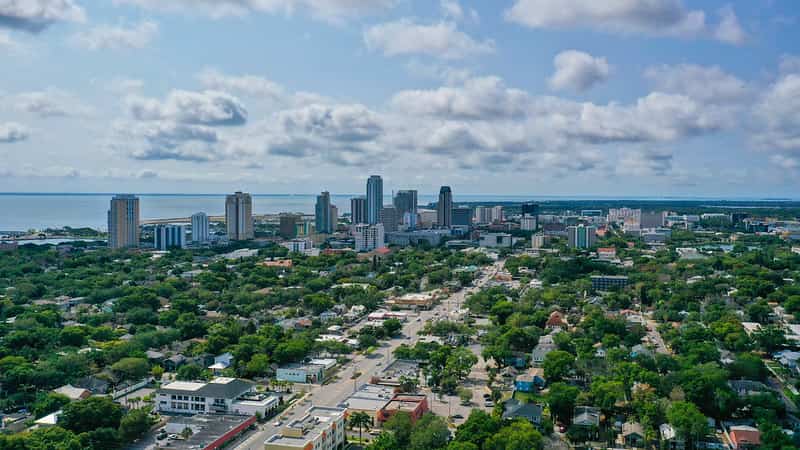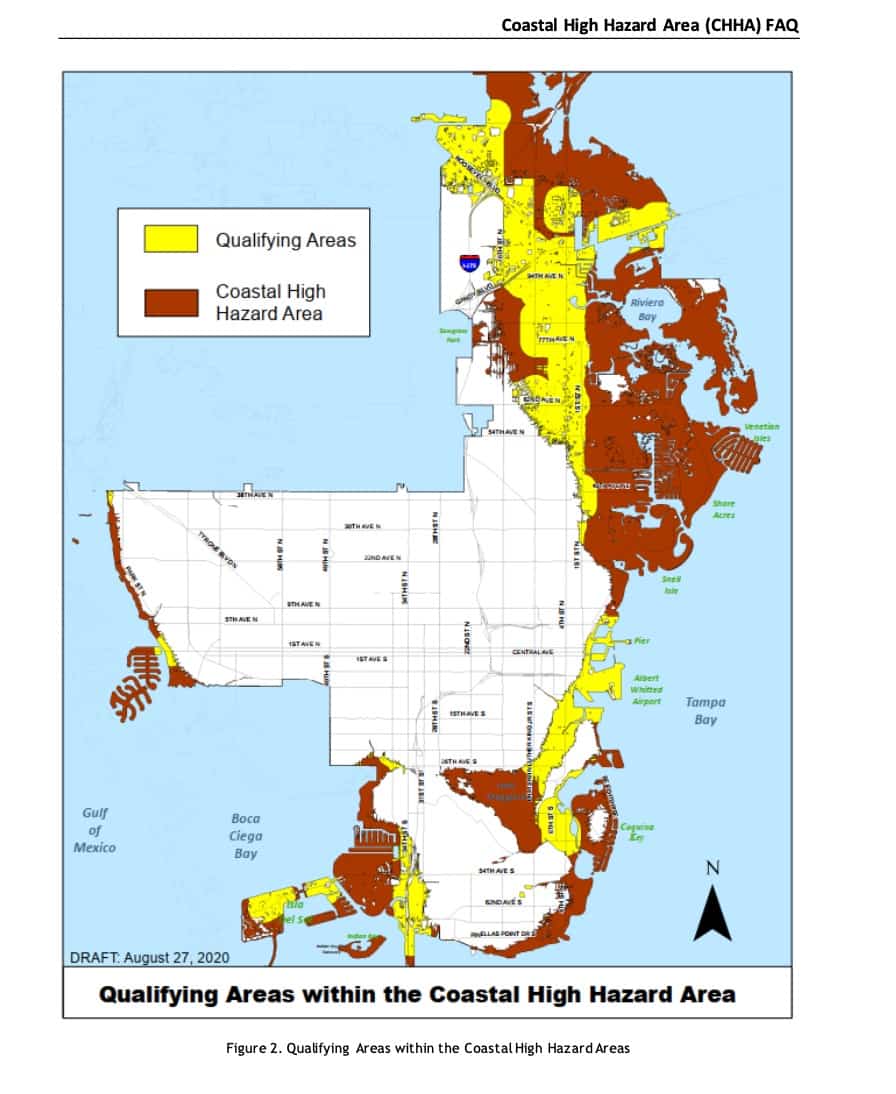Kriseman: Coastal High Hazard Area approval helps build ‘city of the future’

The St. Petersburg City Council has approved a controversial measure that paves the way for controlled development in some parts of the city that are prone to flooding and storm surge.
The Council voted 6 to 2 late Thursday night to approve an ordinance that amends the city’s comprehensive plan to allow greater density, or more dwelling units per acre, in part of the Coastal High Hazard Area, as long as the proposed projects meet a set of strict criteria. Council members Gina Driscoll and Amy Foster cast the two no votes.
The Council voted unanimously for a separate ordinance creating tougher design standards for buildings in the Coastal High Hazard Area.
Opponents said the plan does not go far enough to address the potential impact of climate change and should be part of a broader discussion about development citywide.
Mayor Rick Kriseman, who has has backed the plan since its inception five years ago, said development already is taking place and the new requirements are needed to ensure those projects are safe.
“I would not bring this forward if I wasn’t comfortable with the safeguards in place,” Kriseman said just before the Council vote, “and if I wasn’t comfortable with the strict building standards that will help us realize our vision of becoming a more resilient city. That’s what this is all about. It’s about adaptation and reliance. We need to build the city of the future.”
The Coastal High Hazard Area, or CHHA, is the designation for sites where the property is below the elevation of the expected storm surge from a Category 1 hurricane. About 41 percent of the city of St. Petersburg is in the Coastal High Hazard Area. The ordinances approved by the City Council allow developers to request greater density in about one-third of the CHHA and impose the tougher design standards on all new projects in the CHHA.

The yellow areas show where developers can ask for increases in density, or more dwelling units per acre, provided their projects meet strict criteria.
About 60 people spoke during a nearly five-hour public hearing. About 45 comments came from opponents including Hilary Flower, a climate scientist who does computer modeling to address climate change scenarios in Florida.
“I’m astonished that 34 percent of the Coastal High Hazard Area is to be qualified for development. No amount of increase in building standards can make that make sense. Development in the Coastal High Hazard Area is inherently unsustainable. It is present-focused and cannot possibly be characterized as taking climate change or sea level rise into account,” Flower said.
Leigh Fletcher, a land use attorney, was among those who spoke in favor of the plan.
“The reason I believe this amendment works is because of the criteria in the amendment for when a higher density would be considered … This amendment does not approve higher density. It approves a process that allows the city to use its good policy judgment to determine when it’s appropriate. It limits it to areas already targeted by the city for intensive development. It looks at the ability to maintain evacuation levels required by state law,” Fletcher said. “It’s not a guarantee that any development is going to get approved … What it is, is a pathway that allows the city to grapple with the biggest challenges that have ever faced the city.”
While the debate Thursday night echoed much of what was brought up during an earlier hearing in August, there was one new aspect. Critics said five City Council members — Robert Blackmon, Ed Montanari, Deborah Figgs-Sanders, Lisa Wheeler-Bowman and Brandi Gabbard — had accepted campaign contributions ranging from $3,000 to $6,000 from the Florida Realtors Association. The critics said the association would benefit from additional development and asked those Council members to recuse themselves from the vote because they would have a bias.
Many of those Council members addressed that issue during the debate, saying the campaign contributions would not influence their vote.
“The worst accusation is that my vote is for sale … There is a difference between support and being bought,” Wheeler-Bowman said. “It may not always go the way residents want it to go but we do not take our vote lightly.”
The city’s website has a summary and set of frequently asked questions on the Coastal High Hazard Area.
The St. Pete Catalyst also has provided extensive coverage on the Coastal High Hazard Area plan. See past stories and commentaries here.








Georgia Earp
October 9, 2020at4:23 pm
Thank you for your extensive coverage on this issue.